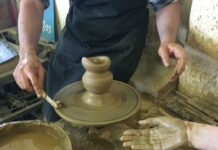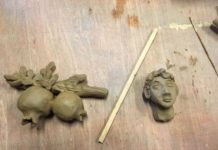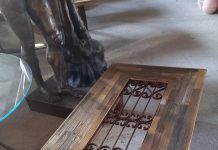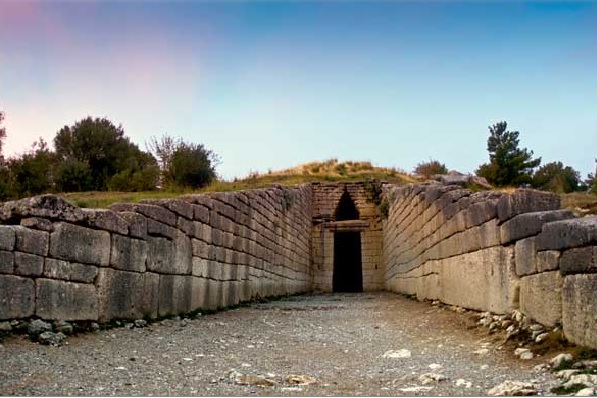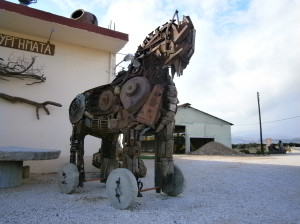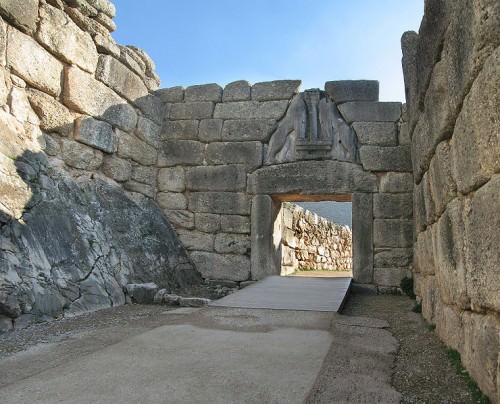VISIT MYCENAE
Mycenae, Homer’s Rich in Gold town, is located between two conical hills. According to the tradition it was founded by Perseas whose dynasty lasted three generations. After them, Mycenae was reined by the family of Atreus and it was during their rule that most of the monuments were built. Their decline started in the 12th century. The town was then occupied by the Dorians and after them it was conquered by Argos (468 B.C.). By the 2nd century B.C. Mycenae was ruined. The visitors will admire the “Lion Gate”, the “cyclopean walls”, the Atreus Palace” the Grave Circles A and B, the famous “Treasure of Atreus”, the “tholos tomb of Clytaemnestra” and many other constructions which will transfer visitors to mythical and glorious days.
The Rich in Gold Acropolis of Mycenae is located in a strategic position, 10km outside the town of Argos, on the old national road to Corinth, burried in a rocky mountain barrow between two conical hills, Profitis Ilias and Sara.
No matter how much you have already heard about Mycenae, it can’t compare to an actual visit to the site. The Acropolis of Mycenae was built on a rocky spot between two high cone-shaped hills, Profitis Elias and Sara, a location of great strategic importance. According to mythology, the citadel was founded by Perseus, son of Zeus and Danae. After the triumph of Troy, Agamemnon, son of Atreus, united all Greeks that took part in the war under his sword and made Mycenae the most important city of its time. Just imagine, you can set foot on the same ground that was once walked by the “Best of Men”, according to Homer.
Important Findings:
The Lion Gate, the majestic Cyclop Walls, the Palace, the residences, the Minoan style decorative mosaics of an earlier period, the remains of Grave Circle A and Grave Circle B, the Tomb of Clytemnestra, the Tomb of Aegisthus, the Underground Cistern, the North Gate, the Treasury of Atreus where numerous golden artifacts were found, including the well known Atreus Death Mask.
Silo Art Factory
The visit at Mycenae is often combined with an excursion to Nafplion and other sights of Argolida. So, as you head from Mycenae to Nafplio, don’t miss the opportunity to spend on break from the Silo Art Factory located in your way. A multiplex containing original works of art, such as a Trojan horse, but also offered for activities such as Pottery Workshops.
Don’t Miss:
The site’s museum
Information:
Mycenae Archaeological Site, Mycenae, 212 00, Argolida
Telephone:
(+30) 2751076585, 76802
Visiting Hours:
Winter: 08:00-15:00 / Summer: 08:00-19:00
Entrance Fee:
Full Price: €8, Reduced Price: €4 (the ticket is valid for the whole site: Acropolis, Museum, Atreus Treasury)
Free Entrance:
March 6th (Melina Mercouri Memorial Day), June 5th (International Environment Day), April 18th (International Monuments Day), Last W/E of September (European Cultural Heritage Days), October 28th, Every first Sunday from November 1st to March 31st
Plan your private tour with yelow cab here
Things to Do in Argolis
SILO STONE HOUSE
Nafplio city, old town, amazing Argolis, magic place
HISTORY
Mycenae was a fortified late Bronze Age city located between two hills on the Argolid plain of the Peloponnese, Greece. The acropolis today dates from between the 14th and 13th century BCE when the Mycenaean civilization was at its peak of power, influence and artistic expression.
IN MYTHOLOGY
In Greek mythology the city was founded by Perseus, who gave the site its name either after his sword scabbard (mykes) fell to the ground and was regarded as a good omen or as he found a water spring near a mushroom (mykes). Perseus was the first king of the Perseid dynasty which ended with Eurytheus (instigator of Hercules‘ famous twelve labours). The succeeding dynasty was the Atreids, whose first king, Atreus, is traditionally believed to have reigned around 1250 BCE. Atreus’ son Agamemnon is believed to have been not only king of Mycenae but of all of the Archaean Greeks and leader of their expedition to Troy to recapture Helen. In Homer’s account of the Trojan War in the Iliad, Mycenae (or Mykene) is described as a ‘well-founded citadel’, as ‘wide-wayed’ and as ‘golden Mycenae’, the latter supported by the recovery of over 15 kilograms of gold objects recovered from the shaft graves in the acropolis.
HISTORICAL OVERVIEW
Situated on a rocky hill (40-50 m high) commanding the surrounding plain as far as the sea 15 km away, the site of Mycenae covered 30,000 square metres and has always been known throughout history, although the surprising lack of literary references to the site suggest it may have been at least partially covered. First excavations were begun by the Archaeological Society of Athens in 1841 CE and then famously continued by Heinrich Schliemann in 1876 CE who discovered the magnificent treasures of Grave Circle A. The archaeological excavations have shown that the city has a much older history than the Greek literary tradition described.
Inhabited since Neolithic times, it is not until c. 2100 BCE that the first walls, pottery finds (including imports from the Cycladic islands) and pit and shaft graves with higher quality grave goods appear. These, taken collectively, suggest a greater importance and prosperity in the settlement.
From c. 1600 BCE there is evidence of an elite presence on the acropolis: high-quality pottery, wall paintings, shaft graves and an increase in the surrounding settlement with the construction of large tholos tombs. From the 14th century BCE the first large-scale palace complex is built (on three artificial terraces), as is the celebrated tholos tomb, the Treasury of Atreus, a monumental circular building with corbelled roof reaching a height of 13.5 m and 14.6 m in diameter and approached by a long walled and unroofed corridor 36 m long and 6m wide. Fortification walls, of large roughly worked stone blocks, surrounding the acropolis (of which the north wall is still visible today), flood management structures such as dams, roads, Linear B tablets and an increase in pottery imports (fitting well with theories of contemporary Mycenaean expansion in the Aegean) illustrate the culture was at its zenith.



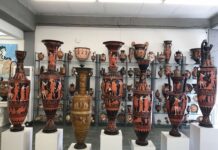

![sword, knife made of bronze and glass, hand made inspired from the Greek antiquity, [the glass needs to be repaired, grinding] sword](https://siloart.gr/wp-content/uploads/2021/04/20210417_130853275_iOS-218x150.jpg)

